30 years ago, a huge radioactive incident happened in Perak. And they’re still cleaning it up…

- 6.9KShares
- Facebook6.2K
- Twitter76
- LinkedIn70
- Email91
- WhatsApp386
This article was originally written in Jan 2018. If you enjoyed this story and want more like this, please subscribe to our HARI INI DALAM SEJARAH Facebook group ?
So it’s been awhile, but the Lynas Corporation has been popping up in the news again.
For those of who have no idea who or what Lynas is, a few years back there had been a hullabaloo when Lynas set up a rare-earth processing plant in Gebeng, Kuantan, called the Lynas Advanced Materials Plant (LAMP). Now, Kuantan MP Fuziah Salleh is leading the calls for Australia to take back the byproducts from the Pahang Lynas processing plant, while Environment Minister Yeo Bee Yin is also set to meet with the Aussie govt to discuss the matter. This comes after Prime Minister Mahathir said that Lynas will be allowed to continue operations in Malaysia.
But what’s the big deal about anyway?
Well, in very simple words, concerns about radioactive waste.
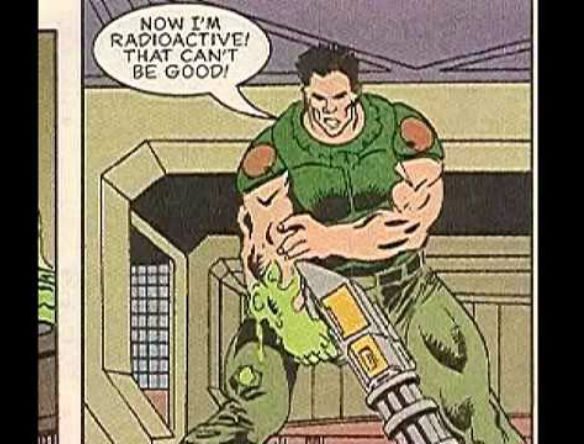
Basically, rare earth metals are a group of chemical elements that are quite useful in manufacturing electronics and stuff. They’re not ‘rare’, but in nature they come clumped together with a buttload of other elements and minerals that make extraction difficult. Think of them like the kerang in your char koay teow, only your char koay teow is a solid mass of blended noodles, prawns, gravy, taugehs and kerang.
What Lynas is doing is processing this solid mass to get only the kerang bits, and all the other parts are considered as waste. However, some of those parts usually contain small amounts of radioactive elements, like thorium and uranium, so you can see how people can be antsy about radioactive sludge being released to the environment, even with all the precautions taken by Lynas.
It was a long-standing issue that had been around for more than 5 years already, and it had become a key election issue in Pahang. The paranoia might have something to do with a previous case of rare earth processing in Malaysia before… yes, this wasn’t the first time this had happened. The previous case had been somewhat disastrous, as…
A factory processing radioactive materials in Perak gave the people living nearby leukemia
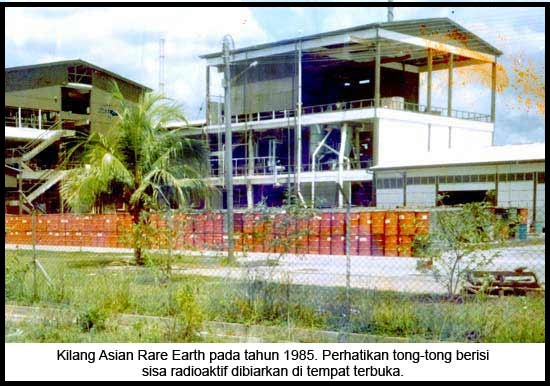
Back in 1982, a rare earth metal extracting company called Asia Rare Earth Sdn Bhd (ARE) was opened in Bukit Merah, Perak. The biggest shareholders for this company was the Mitsubishi Chemical Industries Ltd and Beh Minerals (both owning a 35% share), with Tabung Haji and other Bumiputra businessmen owning lesser shares.
ARE’s business was extracting yttrium, a rare earth metal from a mineral called monazite. Now, monazite can contain several different earth metals, including small amounts of radioactive elements such as thorium and uranium. So the waste products of yttrium production may contain radioactive material, and the Perak government at that time seemed to know this, as…
“It was decided that the waste will be owned by the Perak State Government. It will be stored as it has potential as a nuclear power source.” – Translated excerpt from Utusan Pengguna.
The residents of the nearby town of Papan (about 16 km from Ipoh) have complained about the smell and smoke from the factory that stinks so much, they had difficulty breathing and cried because of it. As if the factory alone wasn’t bad enough, two years after the factory opened, in 1984, the residents found that ARE had built a waste channel to a disposal site near their town. The site was chosen by the state government.

Following that discovery, the Papan residents took action in several ways:
- About 6,700 residents from Papan and a nearby town signed a petition that was sent to the Prime Minister, the Perak MB, the Health Ministry and the Science, Technology and Environment Ministry.
- 200 residents of Papan blocked the road to the waste disposal site.
- Around 3,000 residents, including women and children, participated in a peaceful assembly on the 1st and 4th of July.
There were a few responses to these actions:
- Dr. Mahathir (then the Prime Minister) had stated that the government had taken every precaution to ensure safety, and the construction of the radioactive disposal site will be continued.
- Datuk Amar Stephen Yong (the Science, Technology and Environment Minister) had stated that the disposal site in Papan was safe as it was built under strict regulations. He also challenged the people to prove that the disposal site is hazardous.
Datuk Amar Stephen Yong’s challenge did not go unaccepted.
Foreign physicists were invited to prove the government wrong
(Note: This section heavily referred to a chronology report by the Utusan Pengguna, owned by Penang’s Consumer Association. To read it in full, click here.)
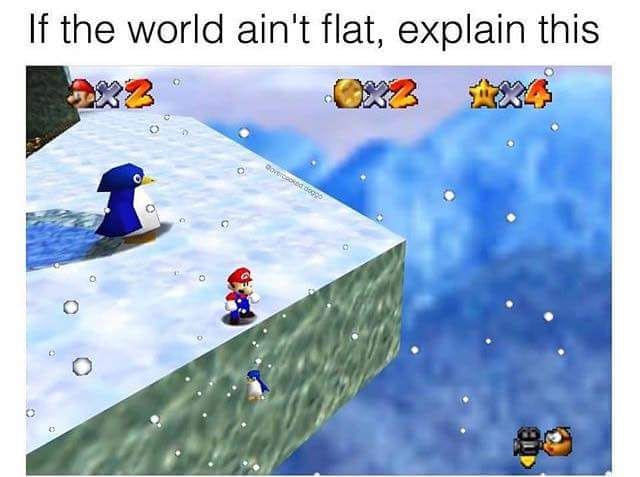
The residents of the nearby towns of Bukit Merah, Lahat, Menglembu and Taman Badri Shah decided that they need to support the residents of Papan, so together they formed the Bukit Merah Acting Committee to handle this issue. The first organization to help the committee was the Sahabat Alam Malaysia, who measured the radiation levels at the open space and pool near ARE’s factory. They found the radiation levels at these places to be 88 times higher than the upper limit allowed by the International Commission of Radiology Protection (ICRP), and they submitted a memorandum to the Prime Minister following that.
The government then invited a team comprised of members of the UN’s International Atomic Energy Agency (IAEA) to visit the factory in Papan, and they declared that the waste channel was not safe for the public.
Papan residents have also invited international experts to perform analyses on the site. Some of them include:
- Dr William Cannell (British physicist and safety analyst)
- Dr Edward Radford (former committee member of US’s Science Academy)
- Dr Jun Ui (Japan’s Industrial Waste Expert)
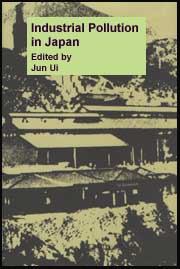
All three of them had declared the site as unsuitable for dangerous waste. However, the government decided to just go through with the original plan anyways. The residents of Papan then performed a one day hunger strike as a protest against the government’s decision, and they continued their efforts by inviting another expert from Japan, Prof. Sadao Ichikawa, who specializes in radiation and genetics. He measured the radiation levels on the open site as well as a pool near the factory, and he discovered that the radiation levels were 800 times the permitted maximum level.
Finally, on the 12th of December 1985, the deputy Prime Minister at that time, Datuk Musa Hitam swooped in and showed his concern by visiting the waste disposal site. A cabinet meeting headed by him later decided to move the disposal site to the Kledang mountain range, which is… like 5 kms from Papan.
This case was later brought to court by 8 of the residents: a welder, a shoemaker, a worker, a barber, a tractor driver, a crane operator and a cancer victim. The judge of Ipoh’s High Court finally ordered ARE to halt their activities until better safety measures are taken. At that time, more than 1,500 people living in the Bukit Merah area were present to hear the verdict.

A month after the court order, ARE claimed that the company had spent more than RM2 million to increase their safety measures according to the International Atomic Energy Agency’s (IAEA) standards. To support their claim, ARE invited Dr E. E. Fowler, an American atomic energy expert to perform a research, which resulted in him declaring that the radiation levels of the factory is safe for operation.
However, that didn’t go smoothly. Prof. Sadao Ichikawa, on his second visit to Bukit Merah found that the radiation levels were still too high. A team from Malaysia’s Atomic Energy Licensing Board (AELB), with the help of a former ARE disposal contractor, visited several illegal thorium dumping sites in Bukit Merah and discovered that the radiation levels at these places were significantly over the ICRP’s maximum safety limit. Following AELB’s revelation, a minister from the Prime Minister’s Office, Kasitah Gadam, had said that the levels were safe despite it being more than the limit, because the number of sites were very small.

Despite the court’s decision for the ARE to stop all operations, the AELB issued a license to ARE. This led the residents to sue the ARE in contempt of the court for disregarding its decision. After a drawn out court battle that took 32 months, in July 1992 the residents finally won their suit against ARE, and the court ordered ARE to close its factory within 14 days.
The people won! It’s a happy ending! …or is it?
But ARE did not surrender, so they filed an appeal to the Federal Court. During the proceedings, the Perak High Court’s decision was suspended, and one year later the Federal Court accepted ARE’s appeal on two grounds:
- The court felt that ARE’s experts were more trustworthy as their research showed that the radiation level was within the permitted range.
- The Supreme Court told the residents to ask the Atomic Energy Licensing Board to withdraw ARE’s license, as the AELB had the power to do so under the Atomic Energy Licensing Act.
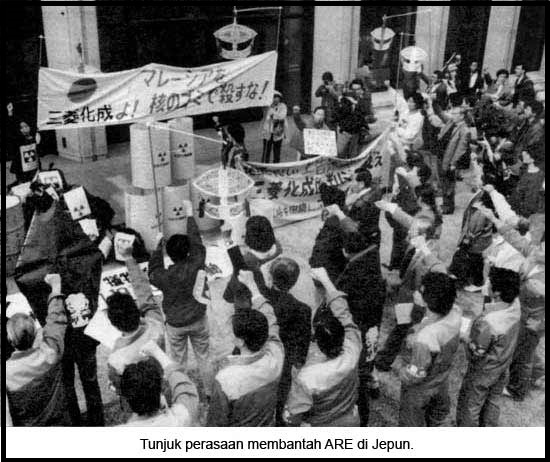
However, the one year space was not wasted by the residents. A couple of them went to Japan to meet up with the highest management officials of Mitsubishi Chemical, one of ARE’s biggest shareholders, and they found out that the appeal was filed without their consent. So, with Mitsubishi’s intervention as well as local and international pressure, ARE stopped their operations anyway despite having won the battle.
On the 19th January 1994, ARE announced the closure of their factory. However, there were still 80,000 liters of radioactive waste in barrels stored within the Kledang mountain range. Cleanup operations costing more than RM300 million are still ongoing, even after 20 years. According to the New York Times, workers have moved 11,000 truckloads of radioactive waste, including old containers. Even contaminated land, going as deep as 25 feet, have been dug up and moved.
But where have they been moving the waste to? In a hole in a mountain 3 miles away from a forest reserve, of course. The waste was buried in the mountain’s core and was trapped beneath 20 feet of clay and granite.
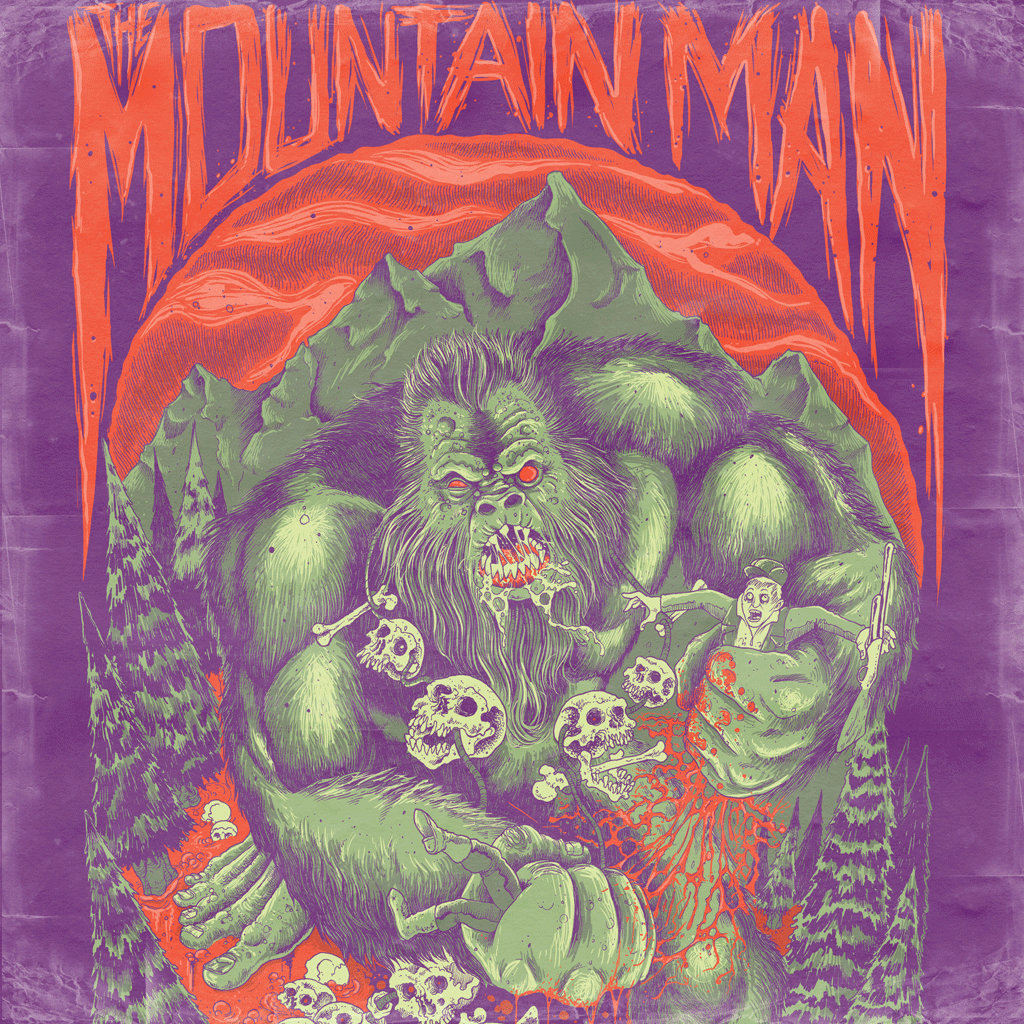
Besides cleaning up their mess, ARE have also made monthly payments to affected citizens though their Development Fund. Shareholder Mitsubishi Chemical had settled with the villagers outside of court by donating 164,000 US Dollars to their community school, at the same time denying any responsibility for the diseases striking the villagers. Some academic research showed that the Bukit Merah community will only have one case of leukemia every three years as a result of radioactivity.
Which brings us to the final point…
Rare earth metals can be dangerous, but the hazards are preventable
It had been reported that the processing of radioactive materials at Bukit Merah had been associated with 8 cases of leukemia and 7 deaths. One of the tragic stories was of Mrs. Lai Kwan, an ARE worker, and her son, Cheah Kok Leong.
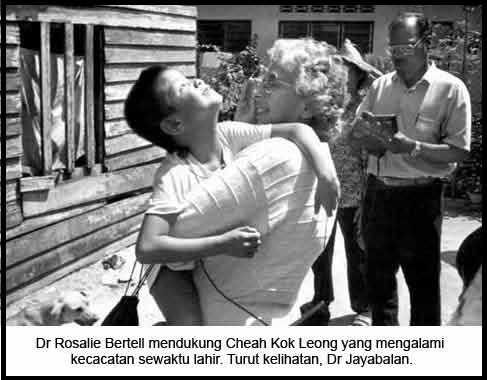
In 1980, Lai Kwan was happy to switch jobs from working in a lumber mill to a better position in ARE’s factory, even though it required her to be close to radioactive materials. When she was pregnant in 1983, she was told by the factory’s boss to take unpaid off days when dangerous materials were delivered to the factory.
Unfortunately, her son was born with physical defects and mental problems. The son (her twelfth), named Cheah Kok Leong, suffered from disabilities such as cataracts and atrial septal defect (ASD). Lai Kwan recounted how Dr. Bertell (a specialist) once held Leong and told him that he won’t live past 30.
“Dr. Bertell’s prediction had been right. Leong loved to look at the new moon. Whenever I see a new moon, I would remember him.” – Mrs. Lai Kwan, from Dr. Yoshihiko Wada’s report.
Leong died at the age of 28 on the 29th March 2010. Lai Kwan and the local villagers blamed the factory’s operations for birth defects even though those can happen due to a lot of factors.
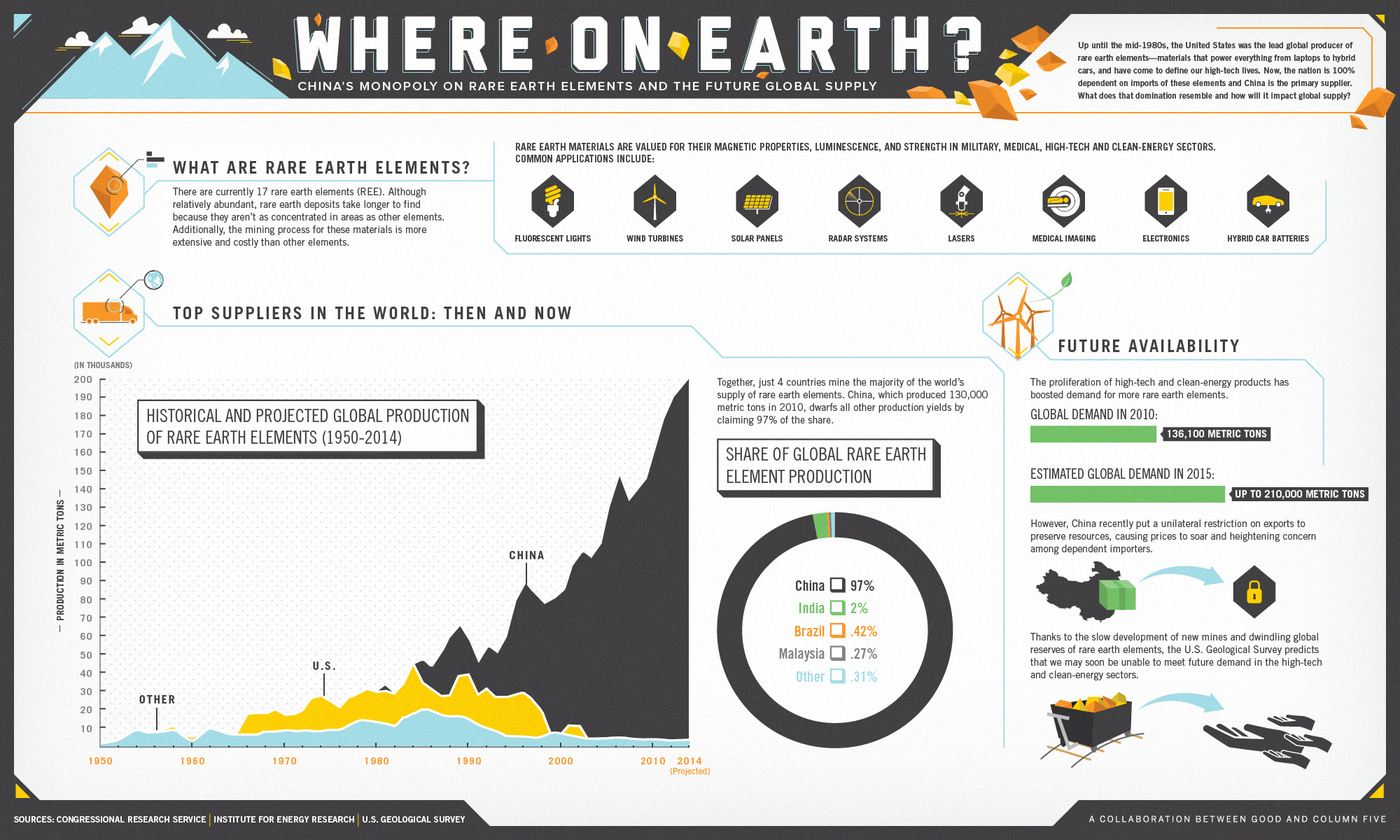
Bukit Merah’s rare earth metal processing site cleanup had been the largest radiation cleanup so far in the world’s rare earth industry. Dr. Yoshihiko Wada’s report revealed that Mitsubishi Chemical came up with ARE in Bukit Merah after being one of the main companies that caused severe asthma in Nagoya, Japan. Also, 100% of the rare earth products processed in Bukit Merah were exported back to Japan, so it’s not like we gained anything but money from the venture, which puts forth the question of whether it’s worth endangering the lives of local residents for rare earth metals.
However, it can’t be denied that the application of rare earth metals in today’s technology is widespread, and they are vital ingredients in many things that we need and enjoy today, like anything with a display screen (TVs and smartphones), speakers, aircraft engines, X-rays and MRI machines. They have to come from somewhere, and while the ARE case had been disastrous, as long as strict regulations and airtight safety measures are in place, the rare earth industry is no different from any other industry out there.
And just like any industry out there, there’s bound to be illegal factories and factories that disregard regulations, and the public can report such cases to the Department of Environment at the number 03 – 8889 1972.
- 6.9KShares
- Facebook6.2K
- Twitter76
- LinkedIn70
- Email91
- WhatsApp386


